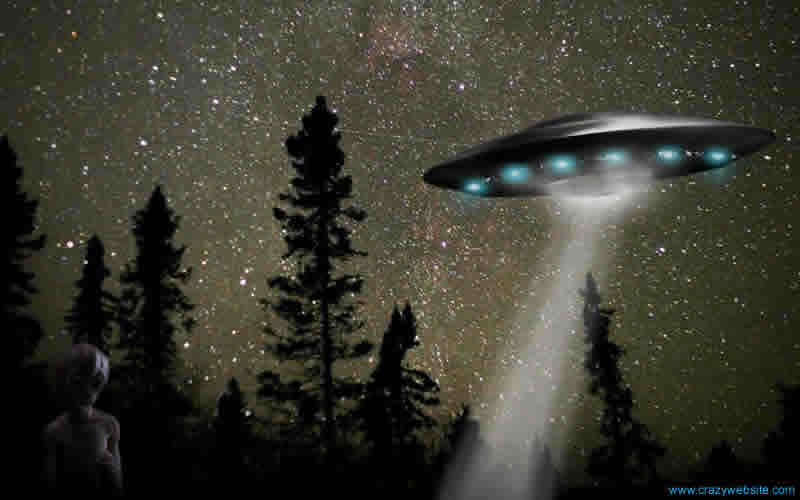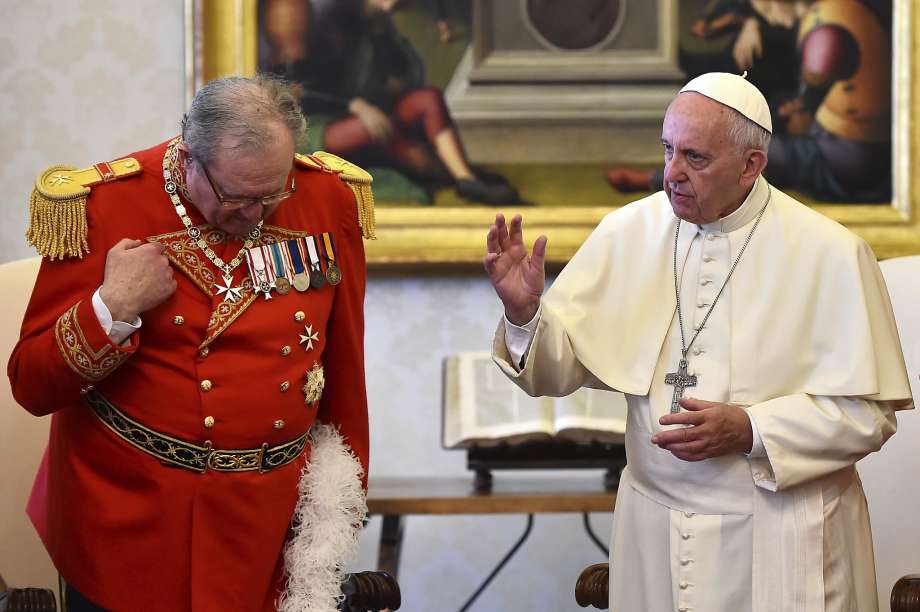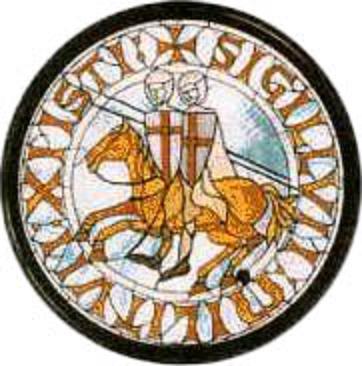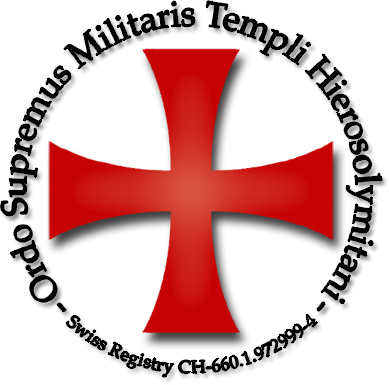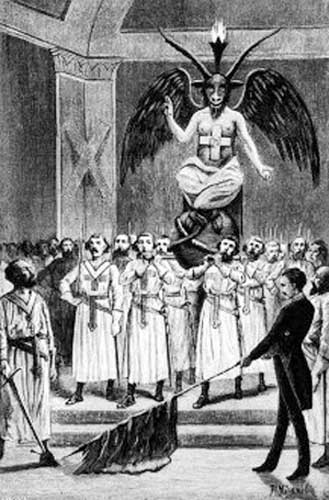(SOURCE: Order of St. John) – About ufology, one thing is now certain: it’s been the province, for decades, of intelligence 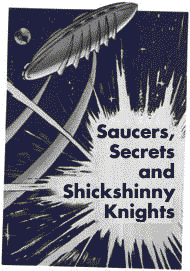 agents. Confirming what many have long suspected, the CIA recently admitted that, during the 1950s, it recommended that the National Security Council adopt a policy of debunking UFO reports.
agents. Confirming what many have long suspected, the CIA recently admitted that, during the 1950s, it recommended that the National Security Council adopt a policy of debunking UFO reports.
This is a story about Men in Black, only not the kind you see at the movies. These men in black don’t cover up UFO incidents; they promote them.
Consider Philip J. Corso. This retired U.S. Army colonel is the co-author (with Bill Birne) of The Day After Roswell, a recent release from Pocket Books whose publication was timed to coincide with last summer’s much hyped anniversary of the alleged UFO crash at Roswell, New Mexico in 1947. In the book, Corso presents himself as a national security insider who is coming clean about the UFO phenomenon and the U.S. government’s involvement with it. The book–which contains no index, no footnotes, and virtually no named sources–reads like a bad episode of NBC’s dimwitted Dark Skies, outdoing much science fiction in the fantastic quality of its claims about UFOs, EBEs, and the like.
Among other things, Corso claims that in the early sixties he headed the Army’s Foreign Technology Division, in which capacity he oversaw the handling of alien material recovered from a saucer crash in New Mexico. Moreover, Corso says his office supplied portions of the saucer debris to various defense contractors and high-tech labs (who were led to think that it was stolen Soviet technology) who developed out of the bestowal such modern marvels as the computer chip, fiber optics, and kevlar. (Of course, Tommy Lee Jones says something similar in the movie Men In Black, adding velcro, microwave ovens, and, as I recall, karaoke machines to the mix; but Corso purports to be serious about this.)
And that’s just for starters. He goes on to regale us with tales of dead alien bodies on display at army bases and secret installations on the moon. Oh yes, and then there’s the truth (“now it can be told!”, as they used to say in the old Captain America comics) about Reagan’s Strategic Defense initiative. Turns out they didn’t call it “Star Wars” for nothing, as its real purpose, according to Corso, was not to deflect a missile attack by the Russkies, but to counter the threat posed by the inscrutable saucer men. This, of course, led to the end of the Cold War, when Reagan agreed to let the Soviets use Star Wars technology to defend the USSR against the same galactic menace.
It gets curiouser still. Corso was formerly a “research assistant” to right-wing segregationist Senator Strom Thurmond (R-South Carolina), the oldest, longest-serving, and (for many) most annoying presence in the U.S. Congress. As Corso’s old boss, Thurmond was persuaded to write the forward to The Day After Roswell, a coup the publishers emphasize with a big blurb on the cover. However, Thurmond apparently neglected to read or even inquire about the book he was plugging; when someone woke him up (he’s well into his nineties) and explained that he was in effect endorsing the existence of UFOs, Thurmond reacted with an announcement disavowing any knowledge of Corso’s kooky-sounding subject matter.
 |
Given such bizarre turns, as well as the complete lack of support for Corso’s claims, a reasonable person might surmise that Corso is either a) a shameless hustler trying to milk a popular myth, b) a mental case, or c) a provocateur whose “work” is meant to disrupt serious inquiry into UFOs and discredit the tiny group of writers and researchers who try to engage the phenomenon with some semblance of intellectual integrity. Option c, in other words, would cast Corso as a debunker of UFOs, since the most likely impact of his outrageous claims will be reinforcement of the notion that ufology is strictly the province of lunatics and fools.
National Security
About ufology, one thing is now certain: it’s been the province, for decades, of intelligence agents. Confirming what many have long suspected, the CIA recently admitted that, during the 1950s, it recommended that the National Security Council adopt a policy of debunking UFO reports. The Spring issue of the CIA journal Studies of Intelligence contains an article by historian Gerald K. Haines entitled “CIA’s Role in the Study of UFOs, 1947-1990.”1The article asserts that concerns over UFO “hysteria” prompted the CIA in 1953 “to create a special outside scientific panel to look into the security implications” of the phenomenon. According to Haines, the panel concluded that there was nothing scientifically unusual going on, i.e., that UFOs were not alien spacecraft. However, the panel was concerned about the impact that a nationwide wave of UFO hysteria might have on Cold War security. If the Soviets were to devise some sneaky means of inducing such a panic, then we might have a real problem. According to the panel, the resultant furor could distract the populace and clog vital lines of communication, making us sitting ducks for a nuclear sneak attack.2 (It all sounds a bit like something from Dr. Strangelove: “Mr. President, I regret to inform you that we’ve discovered a UFO Hysteria Gap!”) Therefore the panel recommended that the NSC “debunk UFO reports and institute a policy of public education to reassure the public of the lack of evidence behind UFOs.”3 (Can you say, “swamp gas”?) The report further recommended that the project enlist the aid of mass media outlets, ad agencies, business organizations, and “even the Disney Corporation to get the message across.”4
Yes, that’s right, boys and girls, according to a CIA journal, the Disney Corporation played a secret role in Cold War ufology, though that’s a topic for another occasion (or perhaps an animated musical). Still, what seems clear is that the spooks saw the realms of mass media and pop culture as areas of real concern about the UFO phenomenon. According to Haines’ article, they set out years ago to manipulate popular beliefs.
One suspects that certain government agencies have persisted in working to manipulate popular belief in UFOs. Moreover, one suspects that at some point such agencies decided to widen the net and approach UFOs from the other direction as well. Currently, the ranks of ufologists are full of ex-military and national security types. Moreover, many of these individuals affirm the existence of UFOs, giving voice to some of the strangest extant scenarios regarding the topic.5Like Corso, many of them offer wild tales and little or no supporting evidence. Consider Bob Lazar, a source for much of the lore surrounding “Area 51” in Nevada. Lazar claims to have worked on top secret government projects, some of which involved the “back-engineering” of recovered alien saucer technology. He claims to have observed aliens, or alien-like entities, at underground bases. Unfortunately, he can produce no real evidence to support his claims.6(It is perhaps interesting to note that the man who “discovered” Lazar, Las Vegas reporter George Knapp, also strongly promotes the reliability of Corso.)7
 |
From the Pentagon perspective, “witnesses” and “testimony” of this type might prove useful in a couple of ways. Given their dubiousness, such reports can obviously be used to debunk UFOs, as per the recommendations of the 1953 CIA panel. However, among those inclined to believe such claims, outrageous stories of the Lazar type can provide a convenient smokescreen. Smokescreen for what, you ask? Well, for what everyone–both UFO believers and skeptics–seems to agree is going on at Area 51, namely the development and testing of super-high tech weaponry. The “debate” is over whether or not the technology in question is derived from “alien” sources. But for those charged with running such a super-weapons lab, a prime interest is secrecy. To such cloak-and-dagger types, wild stories about UFO bases and alien bodies may be just what the spin doctor ordered. They could be very effective at distracting the public from, and confusing the enemy about, what’s really going on. (“The Pentagon bookstore,” Corso co-author Birne enthuses, “stocks The Day After Roswell..”)8
In other words, I’m suggesting that the national security establishment decided, at some point, to go beyond the recommendations of the 1953 CIA panel regarding UFOs. Moreover, they in effect decided to do to the American public what they feared the Soviets would do; they decided to contribute to–to foment–UFO hysteria or, at least, confusion. Of course, their motivation for doing so would have been different from that of the purported Soviet enemy. The rationale would be classically Cold War: we have to develop new weaponry and we have to conceal that development; moreover, we have to know what might happen if an enemy power were to induce UFO hysteria nationwide.
The same kind of twisted logic drove other secret U.S. projects during the Cold War. Korean War reports about Red Chinese “brainwashing” of American prisoners provided the rationale for decades of CIA research into mind control techniques. When atomic war loomed as a real possibility in the fifties, the need to understand its effects was used to justify experiments which exposed unwitting Americans to nuclear radiation. Compared to those interventions in the name of national security, the creation of some UFO hysteria seems a modest imposition.
So, to return to Corso and the question of his purpose: he may be hoping to cash in on a popular topic; he may be some sort of kook; or he may be carrying water for the Pentagon (or all of the above). We can’t say for sure, but a couple of things are clear: he has a background with the Pentagon, with, more specifically, military intelligence; and there is evidence to suggest that he’s had a career as a disinformation specialist.
Secret Societies
For details on this point we must turn to the literature on the Kennedy assassination. That, you may object, is like jumping from the frying pan into the fire, for if there is another topic of popular interest that’s as whacked-out as UFOs, it’s the Kennedy assassination. But bear with me, and keep in mind that the authors I am about to cite approach their research in the most scrupulous fashion. Unlike Corso, they footnote their work with scholarly precision and distinguish clearly between facts and inferences, theories and speculations. The books detailing Corso’s background include Deep Politics and the Death of JFK by UC/Berkeley professor Peter Dale Scott; The Man Who Knew Too Much by journalist Dick Russell; and a tome about American intelligence (which does not emphasize the JFK case) called The Old Boys by Burton Hersh. They concur on the following history:
In the early sixties Corso was a member of a secret society called The Sovereign Order of Saint John of Jerusalem, also known as the Shickshinny Knights of Malta, after the Pennsylvania town where the order was based. (This group is not to be confused with the other–and better known–Knights of Malta, the Rome-based Sovereign Military Order of Malta.)9 The order’s “Armed Services Committee” was full of retired military types with ultra-rightist sympathies and included generals from the MacArthur circle like Bonner Fellers and Pedro del Valle. The Committee also included British Admiral Sir Barry Domville, who was fingered by the English as a Nazi agent and jailed during World War II, and General Charles Willoughby, former chief of intelligence for General Douglas MacArthur, whom MacArthur referred to as “my little fascist.”10
The Shickshinny Knights were fanatical anticommunists. Some of them, like Willoughby, were affiliated with international ultra-rightist organizations like the World Anticommunist League and the International Committee for the Defense of Christian Culture. Shickshinny, PA was itself the home of many White Russians who had fled Russia when the Bolsheviks came to power. In 1963, the Grand Chancellor of the Order was Col. Charles Thourot Pichel; during the thirties, Pichel had lobbied the German government to appoint him the official American liaison to Hitler.11
The Shickshinny Knights Armed Services Committee membership list also included Philip J. Corso, who, according to Russell, “had been a twenty-year Army Intelligence career man until his retirement in August 1963”.12 Russell notes that in 1954 Corso had been the Army Operations Coordinating Board’s delegate to the CIA team planning the overthrow of Guatemalan President Jacobo Arbenz Guzman. (This coup, in which the democratically elected leftist Arbenz was successfully removed from office, was primarily a U.S. intelligence operation. It was celebrated by the CIA as a “bloodless coup” because nary a shot was fired; rather, Arbenz was driven to flee the country by a barrage of U.S.-backed disinformation and propaganda. In other words, it was for the most part what spy folk call a “psy op,” or psychological operation.) In 1956, Corso worked with West German paramilitary units connected to the spy network of former Nazi masterspy Reinhard Gehlen.13 (Corso himself claims that he participated in Operation Paperclip, the American intelligence operation that repatriated Nazi rocket scientists like Werner von Braun and Walter Dornberger to the U.S., so that they could run the U.S. space program.)
According to Peter Dale Scott, after the Kennedy assassination, both Corso and Frank Capell (another Shickshinny Knight, also an editor for the John Birch Society) were instrumental in spreading “stories linking Oswald to Russia and Ruby to Castro’s Cuba.”14 In Deep Politics, Scott argues that such stories were systematically disseminated after the assassination as part of a coverup, i.e., a disinformation scheme whose purpose was to deflect attention away from the real forces behind the Kennedy murder.
Russell concurs, saying that Corso was “among the first to spread rumors hinting that Oswald was tied to a Communist ring inside the CIA”.15Apparently the colonel is still on the case: according to Corso co-author Birne, an upcoming volume from the duo, tentatively titled The Day After Dallas, will give the real insider’s lowdown on the JFK assassination, emphasizing alleged penetration of the CIA and “the entire U.S. secret government,” by the KGB.16 (Interestingly, Russell explores indications–admittedly circumstantial–suggesting that the real group behind the assassination was connected to Willoughby and a “right-wing clique inside the Pentagon.”17
Both Russell and Scott link Willoughby, Corso, and company to a power struggle within the national security establishment between ultra-right military intelligence types and more “liberal,” civilian CIA men.
- Willoughby’s “old boys” were a vastly different breed from the old-school tie, Ivy League crowd who ran the CIA. Their enmity went back to a battle for hegemony between Military Intelligence and the OSS [the CIA] during World War II. While the CIA’s power base expanded, the MacArthur-Willoughby’s team’s very existence was threatened. One Democratic president, Harry Truman, pushed them out of the far east. But Willoughby and his ilk did not fade away. They melded into global alliances, extending from quasi-religious orders such as the Shickshinny Knights of Malta to the [ex-Nazi] Reinhard Gehlen-Otto Skorzeny spy team in Europe.18
Such details may have no bearing on Corso’s bizarre UFO memoir. But they make clear that Corso has had a lifelong association with military intelligence and the ultra-right. They also suggest that he’s no slouch at disinformation schemes and no stranger to hidden agendas. Furthermore, it’s clear from such history that Corso is a veteran of CIA-style espionage. Interestingly, in The Day After Roswell, he paints CIA types as the bad guys in the story. It’s this branch of the government that is bent on keeping the truth from the American people, Corso implies. Salt of the earth military patriots like himself just want the truth to come out, dadgummit.
Populist Generals
The image of populist generals fighting faceless bureaucrats on behalf of you and me has great appeal to Americans raised on John Wayne and Jimmy Stewart movies. Author Jim Marrs concludes his recent book on UFOs, Alien Agenda, on just such a note, ascribing the alleged government coverup of alleged alien presence to the exploitative “money power” that was the target of the old populist political movement.19 Marrs even brings up the story of the populist General Smedley Butler, who, after a career as one of the Marine Corps’ most celebrated leaders, repudiated imperialism and the globalist agenda of corporate America back in the 1930s. Butler is a fascinating figure (he began as the most gungho of Marines and ended as a spokesman for the League Against War and Fascism) but he has zero to do with UFOs.20 But for Marrs the UFO issue is basically populist politics; as with the Kennedy assassination (the subject of Marrs’ bestselling Crossfire, it’s a case of the people being lied to and manipulated by the elites of business and government.
 |
Corso strikes a similar pose: he’s a populist general–or colonel, anyway–who’s here to blow the whistle on what those creeps in the ivory towers are doing to us. But Corso is no Smedley Butler, nor is he a populist in the old sense of the term, where the slogan “Share the Wealth” implied a concern for the underclass. The Shickshinny Knights who made up the Armed Services Committee of the society were described in the group’s literature as “Soldiers of Christ and Advocates of a Free World”–as the shock troops of global anticommunism.21 Sharing the wealth, it seems safe to say, was not part of their agenda.
But even Corso’s pseudo-populist position has a Shickshinny feel to it. As both Scott and Russell demonstrate, the Shickshinny milieu represents a faction of the intelligence community that is to the right of the CIA and which views the whole civilian intelligence apparatus as a hotbed of dangerous liberalism. J. Edgar Hoover’s own turf war with the CIA during the 1950s factors into this. As Scott writes:
- The intra-bureaucratic feud of the 1950s between the CIA and Hoover was much more than a matter of personalities: it was a conflict between alternate visions (globalist/internationalist versus nationalist/expansionist) of how the United States should expand into the rest of the world. Where the major oil companies and their allies in the CIA thought of creating and dominating a global economy, their nationalist opposition in the United States preferred unilateralist expansion into specific areas, above all Latin America and the far east. The latter group allied dissident generals, resentful of civilian control, with exploiters of minerals and independent oilmen opposed to the oil majors, like William Pawley and H. L. Hunt.22
These days, many would argue that the people would be well served by more opposition to the global economy and its elite promoters. But the “nationalist” opposition to globalization described above might as well be called the “fascist” opposition. Hunt, Hoover, and the Shickshinny types may not be fans of globalization, but they sure aren’t the champions of ordinary folk. For “unilateralist expansion into. . . Latin America and the far east,” read “Guatemala,” “Chile,” “Korea,” “Vietnam.”
Propaganda for the Ultra-Right
Coming back then to the question of what Corso is up to, I want to propose another possibility. While Corso is no doubt enriching himself at least a bit, and while his claims may indeed help the Pentagon disguise projects like Area 51, he may have still another purpose in mind, the same one he had in mind back in 1963: namely, stirring up popular sentiment against internationalism and the dangerous liberals in the CIA. (Imagine, for a moment, the mindset that views the CIA as “liberal.”) He may be performing his Shickshinny specialty, spreading propaganda on behalf of the reactionary right. It’s just that today he’s using popular belief in UFO coverups to do so.
Think about it: conspiracy theories have of late become the national pastime. Of course, this is understandable, given that actual conspiracies–like Watergate, Iran-Contra, and the Kennedy coverup–have inundated the American people in recent decades. The current popular obsession with conspiracies is also fueled by the decline of the old myth, dominant in the fifties and so flattering to America’s self image, which assured Americans that conspiracies can’t happen here. In recent years the old myth has collapsed under the weight of reality. But now, in place of the discredited old certainty, the popular imagination has embraced a new myth, one that is just as sweeping and irrational as the old one, but which says the opposite: i.e., everything’s a conspiracy. And in this, activists of the ultra-right see an organizing tool.
The ultra-right has a long historical association with conspiracy theories; claims that the Jews were plotting to take over the world served Hitler and the Nazis quite well in their rise to power. Today, in the wake of the Cold War, it’s quite clear that the ultra-right is on the rise again, as are grandiose, demonizing conspiracy theories. In some corners, a program appears to be underway whose purpose is to exploit popular interest in conspiracies for rightist purposes. Consider the militia subculture: while this milieu no doubt includes some people who are sincere in their distrust of big government, it’s also full of neo-Nazi organizers looking to draw such innocents into the fascist orbit. Conspiracy theories about government plots, many of them as kooky sounding and ill-supported as those spouted by Corso, abound in this same milieu. These help drive a wedge between the people and “the government,” reinforcing a popular alienation which the ultra-rightists can exploit.
Lore about UFOs and government coverups can be made to fit this same pattern.23 It’s a popular mythology that can be used to convince people–through drama, not data–that yes, something terribly wrong, something virtually demonic, is going on “in Washington.” Of course, not everyone will be convinced by such propaganda; indeed, many won’t even listen; but some will, and they will tend to encounter the stories in media contexts where standards of proof are, at best, loose. On talk radio, on the Internet, in subcultures like those surrounding the militias or ufology, assertion often passes for proof and rumor for fact.
Propagandists for the ultra-right have, one suspects, figured this out. They’ve targeted these marginal, unregulated areas of the media and are using them to spread myths, rumors and lies, the gist of which is always the same: that “the Guvmint” is your worst enemy. Never mind that the people spreading such tales often emerge from the national security milieu themselves, as was the case with the Shickshinny rumormongers in 1963. Never mind that their quibble seems to be not with exploitation per se but with who gets to reap the benefits of it. Never mind that such “Soldiers of Christ” seem mostly to worship military might.
Is Corso still a propagandist of this type, or is he today just a buffoon? The colonel ends his book congratulating himself on having saved his country, his planet, and his species It’s so ridiculous, you have to chuckle. Old Soldiers of Christ never die; they just protect the earth from the scum of the universe. And hey, you can’t argue with that. But let us give the last word here to a different kind of soldier:
- We must give up the Prussian ideal–carrying on offensive warfare and imposing our wills upon other people in distant places. Such doctrine is un-American and vicious. . .There must be no more reactionary and destructive intelligence work. The true domestic enemies of our nation–hunger, injustice, and exploitation–should concern the military intelligence; not the subversive shadows of their own creation.24
So wrote Smedley Butler, ex-Marine general and authentic populist, in 1935. Now: who you gonna call?
Notes and References
by Martin Davis – This page was copied from the original site on http://www.lumpen.com.
1. Kramer, Gene. “CIA Feared UFO Hysteria,” Chicago Sun-Times August 4, 1997: A4.
2. Ibid.
3. Qtd. in ibid.
4. Qtd. in ibid.
5. See, for example, Karl Pflock, “I Was a Ufologist for the CIA” (UFO 8:6, Nov./Dec. 1993), in which Pflock discusses his “cloak and dagger” career in the Defense Department while denying it has any connection with his work as a Ufologist; or Don Ecker, “Noted Ufologist Admits Briefing CIA: (UFO 8:5, Sept./Oct. 1993), concerning Dr. Bruce Maccabee, a Navy scientist who specializes in analysis of UFO photographs and who is frequently quoted in UFO literature. Maccabee admits to “periodically meeting with CIA personnel and secretly briefing them on UFO matters since 1979” (p.7).
6. Marrs, Jim. Alien Agenda (NY: HarperCollins, 1977), 183-87.
7. Knapp, George. “Debunkers of ‘Whistleblower’ May Be Premature,” UFO 12:3, May/June 1997, 22-23.
8. Leach, Robert T. “Behind the Roswell Secrets: Q&A: Day After Co-Author Bill Birnes,” UFO 12:5, Sept./Oct. 1997, 28.
9. Russell, Dick. The Man Who Knew Too Much (NY: Carroll & Graf, 1992), 528. For more on the various groups calling themselves “Knights of Malta” and a detailed tracing of their right-wing connections, see Francoise Hervet, “The Sovereign Military Order of Malta,” Covert Action, Winter 1986.
10. Ibid., 529; MacArthur quote, 708.
11. Ibid., 528.
12. Ibid., 529.
13. Ibid.
14. Scott, Peter Dale. Deep Politics and the Death of JFK (Berkeley: Univ. of California Pr., 1993), 214.
15. Russell, 529.
16. Leach, 28.
17. Russell, 708-09
18. Russell, 707.
19. Marrs, 380-94.
20. For more on Butler, see Hans Schmidt, Maverick Marine: General Smedley Butler and the Contradictions of American Military History (Univ. of Kentucky Pr., 1987).
21. Russell, 529.
22. Scott, 212.
23. See, for instance, the collection of bizarre UFO texts by the author called “Commander X.” They’re full of ultra-rightist rhetoric about a coming one-world government and its ungodly horrors. Also, William Cooper’s Behold a Pale Horse blends ultra-rightist conspiracy talk and Christian apocalypticism with supposed “revelations” about the government and UFOs.
24. Butler, Smedley. “War is a Racket,” Prevailing Winds #2, 1995, 4. The text is a reprint of a speech delivered by Butler in 1993.

Moe is the founder of GnosticWarrior.com. He is a father, husband, author, martial arts black belt, and an expert in Gnosticism, the occult, and esotericism.

